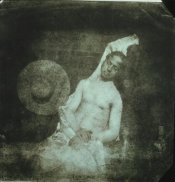Y'all are abusively misusing the word "truth". There is no "truth" to photographs. They can be factual, but they are not true. True is a moral state, and only occasionally overlaps with factual. Things that are true often rely on faith that they are true, sometimes without empirical evidence, sometimes in contravention of empirical evidence (virgin births, winged horse rides, turning people into pillars of salt, etc).
What confuses people about the factuality of photographs is the high degree of verisimiltude they possess. Because a photograph can be made in such a way that it represents a moment in a place with a high degree of verisimilitude does not make it "true", or even factual. A photograph from a given angle can make a scene appear to be one thing when a different photograph, taken at the same time of the same scene, from a different angle, can give the appearance of something entirely different.
There are so many choices that are made, either consciously or instinctively, in the moments prior to exposure that shape the appearance of an image. Lens focal length, camera format, film grain, focusing, lens aperture, shutter speed, color or black and white, processing of that film (assuming we are talking about film given the venue in which we are discussing this question).
Up to a point, a photograph does have evidentiary value (the things depicted in the photograph were in a certain relationship to one another at a given time in a given place). But that is not an exclusive, all-encompassing definition of what a photograph is, regardless of the medium in which it was recorded. And just because a photograph may have evidentiary value does not mean that it can only have evidentiary value or that its evidentiary value is fixed. The evidentiary value of a photograph may be superseded by emotional value, for example.





